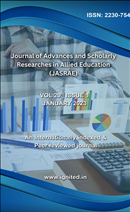Synthesis and Characterization of Polythiophene and Polypyrrole
Keywords:
polythiophene, polypyrrole, nanofibers, chemical oxidative polymerization, X-ray diffraction method, Fourier transform infrared analysis, energy dispersive X-ray spectroscopy, transmission electron microscopy, atomic force microscopy, zeta potential technique, ammonium persulfate, sodium dodecyl sulfate, FeCl3, synthesis conditions, polymer structure, morphology, FTIRAbstract
Nanofibers of polythiophene have been made using an in-situ chemical oxidative polymerizationtechnique. Polythiophene production was verified by means of the X-ray diffraction method (XRD) and theFourier transform infrared analysis (FTIR). Energy dispersive X-ray spectroscopy (EDAX), transmissionelectron microscopy (TEM), and atomic force microscopy (AFM) were also used to evaluate thesynthesized polythiophene nanofibers. The surface charge of the polymer was calculated using the zetapotential technique. Through the use of ammonium persulfate and sodium dodecyl sulfate as surfactantsand FeCl3 as an oxidant, a polymer of pyrrole (Polypyrrole) was easily produced. The optimal properties ofthe synthesized material were achieved by adjusting the synthesis conditions (oxidants, time,temperature, etc.). Polymer structure and morphology were investigated. Polypyrrole production is beinginvestigated using FTIR.Downloads
Download data is not yet available.
Published
2023-01-01
Issue
Section
Articles
How to Cite
[1]
“Synthesis and Characterization of Polythiophene and Polypyrrole”, JASRAE, vol. 20, no. 1, pp. 220–224, Jan. 2023, Accessed: Jan. 13, 2026. [Online]. Available: https://ignited.in/index.php/jasrae/article/view/14294











